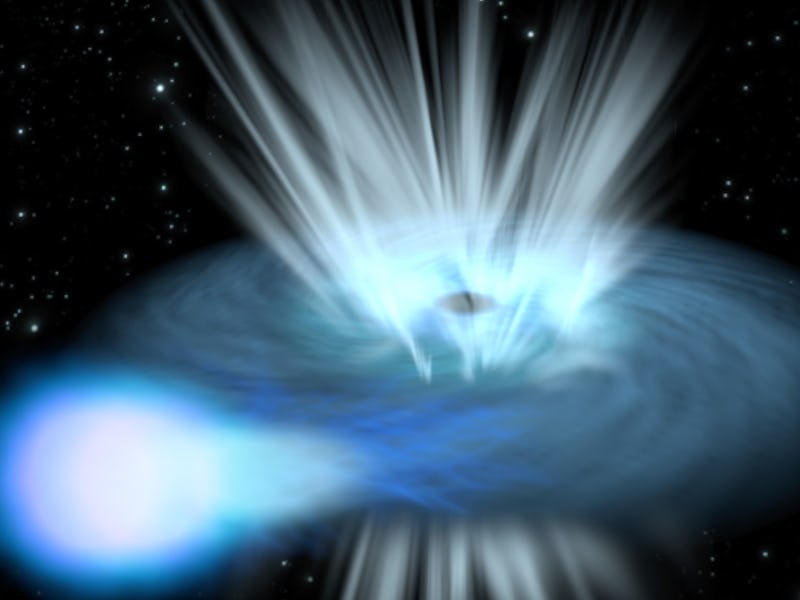This Rare X-Ray Binary Star Passes Gas at a Quarter of the Speed of Light
A smallish black hole might be at the center of the mystery.

The European Space Agency has discovered a mind-blowingly awesome celestial phenomenon. Most of the light emitted in the X-ray spectrum in the universe comes from the supermassive black holes at the center of galaxies, or from binary systems where a star orbits around a stellar remnant — a white dwarf, neutron star, or black hole.
But on rare occasions, these X-ray-emitting binaries are 100 times brighter than normal, and astronomers are still trying to figure out why. This week a group of Cambridge University researchers published new evidence, proving that these systems are sources of very strong winds that blow gases out from them at very high speeds — up to a quarter the speed of light.
The discovery confirms that there must be an object at the center of these binaries that is very rapidly taking on mass in the form of gases pulled away from the orbiting star. What exactly that is is still unknown, but it could be a medium-sized black hole, weighing maybe 1,000 times as much as the sun. These elusive celestial orbs should exist in theory, but have yet to be physically located in the universe.
The answer to the mystery might just be found in the eye of a violent X-ray storm.